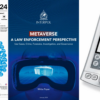Top 3 misconceptions about AI that IP practitioners should be aware of – Job offer Patent Engineer
AI (Artificial Intelligence) has been part of my career for almost two decades now. Initially in my electrical engineering studies and in scientific research, in software development, and then of course, mostly as inventions to be patented. In the following, I would like to clear up a few misconceptions in the context of AI in Intellectual property (IP) that I have come across most often and not just since the hype triggered by ChatGPT.
1 . “AI is more intelligent than humans.”
I must confess that I have never really liked the term “Artificial Intelligence”. As patent attorneys, we are particularly aware of the subtleties of language. And “AI” evokes more misunderstandings than clarity about this amazing technology.
Machine Learning (ML) constitutes the most relevant part of AI. And from my experience, by scientists and inventors, the term ML has usually been preferred over “AI”. In my opinion, it is the nicer description. Because, as it turns out, the intelligence of the machine can easily be overestimated.
If the abilities of AI are misjudged, this may have a rather negative outcome for the user. What a false understanding of AI can lead to is shown by the many examples in which ChatGPT’s false facts (hallucinations) have led to unpleasant false facts even in submissions by lawyers to the court.
Of course, it is understandable that users are inexperienced in using a new technology. Only recently has AI ceased to be almost exclusively the domain of researchers and developers and has become an important political and social issue. And that’s a good thing. However, the public perception of “intelligent machines” sometimes takes surprising turns. The image of eerie thinking machines that make their own decisions. Or the believe that when the deployed algorithm is used (inference in ML) it may independently learn on its own and even eventually develop into something that goes far beyond its original purpose.
It should be clear that we do not yet have intelligent machines with a will of their own. And we are probably still a long way from an Artificial General Intelligence (AGI), i.e. a computer more powerful than humans.
There must be more understanding of what AI – how it can be used in everyday life today – is. In most cases, we are talking about a particular form of specialized algorithms that gain significance nowadays mainly by being intelligently applied for practical use. Applied correctly, ML has the potential for disruptive innovation and can provide a key competitive advantage in many business fields.
Consequently, intelligence is now primarily in demand from humans, not from machines. It is necessary to understand the technology in order to find smart uses for it, how it can be adapted for them, and ultimately how to protect it.
The next false claim is less related to a technological misconception but rather a legal one.
2 . “AI cannot be patented.”
No patents for AI? It is true that AI algorithms are usually implemented as software. And it is true that software inventions are also falsely suspected of not being patentable at all.
Why is this prejudice so persistent? In my day-to-day work, I often talk to inventors or clients who are surprised that software can be patented. Because of that, on the one hand, they are missing out on opportunities to protect their own ideas. A protection that many innovations deserve, which nowadays almost often concern software.
For the same reason, some overestimate their freedom to operate – the false expectation that software cannot be protected not only by themselves but also not by competitors leads to a false sense of security when launching new products on the market. And the opposite is actually the case. Software-related technologies are trending with a rapid increase of patent filings in every annual patent statistic. Software is being patented.
Unsurprisingly, the same applies to AI.
To be clear: AI is patentable.
Of course, new technologies create new challenges. There are still certain problems when it comes to patenting AI inventions. Roughly summarized: In many countries, it is necessary for software and therefore also AI to be related to a specific technical application. Patent offices have therefore developed their own rules, such as the EPO’s so-called Comvik approach or the two-part test according to the US’s famous Alice decision.
Of course, patenting AI requires patent attorneys who have in-depth experience with software patenting. And with AI. And oftentimes, also with the technical field in which the AI is used.
But first and foremost it turns out that it requires the recognition of AI as being patentable material worthy of protection.
Thus, there are patents for AI (as long as an AI is not named as the sole inventor, but that’s another story).
This leads to the next false assumption:
3 . “AI innovations mostly arise inside of AI research and computer science.”
Of course, one shouldn’t underestimate the ingenuity involved in researching new AI algorithms or training methods. Nevertheless, innovations in connection with AI relate to smart use cases and the practical, mostly technical, application.
The protection of AI-based use cases may be primarily covered by patents. What can make patenting of AI difficult is, it is common practice in most patent offices to grant patents only for a specific technical application. For example, an electrical engineering application. Or medical technology.
In other words, to patent AI-based use cases one have to find a specific technical connection. Luckily, ML is almost always related to a practical application. And more often than not this includes technical aspects. This ranges from medical diagnostics using imaging devices to construction tools and predictive maintenance applications in industrial automation.
AI is therefore mostly gaining importance as a cross-sectional technology. Inventions are created through an interdisciplinary understanding and cooperation between experts from different fields.
The inventive spirit is demonstrated in
- the development and training of AI models tailored to the needs of the end user or in a specific industry, and
- identifying the right application for an AI model and designing it to effectively contribute to solving challenges in the real world.
Thinking outside the box is therefore key.
Logically, to harvest these AI inventions it is advisable to also involve interdisciplinary cooperation of technical and IP experts that are able to think outside the box. Because it is the synergy of the different fields and technologies that makes the innovation. That is the true value of AI.
About the blogpost author:
 Sebastian Goebel is a European and German patent attorney, UPC representative, and co-founder of the patent law firm Bösherz Goebel with a primary focus on innovations in the field of digital technologies.
Sebastian Goebel is a European and German patent attorney, UPC representative, and co-founder of the patent law firm Bösherz Goebel with a primary focus on innovations in the field of digital technologies.
His professional journey commenced as an electrical engineer and software developer, where he also contributed to research in medical technology and Machine Learning (ML), among others at the Ruhr University Bochum, and the University of California in Los Angeles. In this context, he was also awarded the Inventor Prize of the Ruhr University Bochum. In addition, he holds a Master’s degree in Lasers and Photonics and contributed as a lecturer to the Intellectual Property course at the Ruhr University Bochum.
Based on his practical experience in various technological areas, his expertise lies in the interdisciplinary use of Machine Learning together with other engineering sciences. In addition, he is an AI enthusiast who is passionate about the use of Machine Learning tools in the field of legal work.
Contact: sebastian@boesherzgoebel.de
Job offer
boesherz | goebel patent attorneys is a forward-thinking, internationally oriented patent law firm in Germany. They rely on a decentralized approach with employees throughout Germany and modern remote working models. Their technical focus is on Software, Artificial Intelligence, Electronics and Telecommunications. Their driving force are great, innovative ideas that deserve sustainable protection.
They are looking for a highly motivated Patent Engineer for their team:
Your key responsibilities:
- Conducting prior art searches for invention disclosures and opposition proceedings,
- Preparation of freedom-to-operate analyses,
- Conducting inventor interviews,
- Drafting patent applications,
- Drafting responses to office actions.
You skills:
- Degree in patent engineering, electrical engineering, or software engineering, ideally with a focus on artificial intelligence or telecommunications,
- First experience in intellectual property rights,
- Analytical, structured, and creative abilities,
- Persistence and assertiveness,
- Joy in the precise use of German and English to describe technical issues,
- Very good communication skills.
They offer:
- Personal support from the firm’s attorneys and patent engineers,
- A pleasant working atmosphere in a highly motivated team,
- Remote working model – We offer flexible working models with the option to work from home to suit your life situation,
- Use of modern automation and AI tools for daily (drafting) work,
- Fully digital and cloud-based working for optimum work efficiency,
- An attractive and competitive salary for your valuable and high-quality work,
- 30 days vacation.
Please send your detailed application to jobs@boesherzgoebel.de



